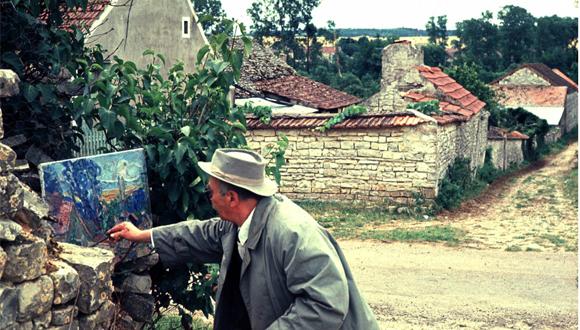The Michel Kikoïne Art Gallery
Michelle Kikoïne:
Michel Kikoïne (1892-1968) was born in Gomel, Belarus to an educated Jewish family, studied at the Vilnius Academy of Fine Arts and moved to Paris in 1912. The city, that was the avant-garde capital of the Western world in the early 20th century, became home to many Jewish artists, mainly from Eastern Europe. Chaïm Soutine, Amedeo Modigliani, Marc Chagall, Jules Pascin, Pinchus Kremegne, Moïse Kisling, Jacques Lipchitz - these artists and many others flocked to the city as for many it is not only a fertile and challenging cultural center but also a city of refuge, a place of political and cultural freedom, and equal social opportunities. Their grouping together in Paris and their rapid success created a new community that shocked the Parisian art world. They soon integrated into the French art world, as their work gained recognition and was displayed in important salons and galleries.
Kikoïne exhibited as early as 1919 at the "Salon des Independants" and in 1920 at the "Salon d'Automne." In 1920, he also had a solo exhibition at the Marcel Bernheim Gallery, and in 1923 he participated in a group exhibition at the Bernheim-Jeune Gallery, alongside artists such as Pierre Bonnard, Raoul Dufy, Othon Friesz and Marie Laurencin. Kikoïne, who initially drew his inspiration from Pissarro and Cézanne, traveled often to the countryside of France to paint the scenery, usually in the company of his two best friends, Soutine and Kremegne. He also painted portraits and still life in which the Old Masters legacy is evident. At the same time, he gradually began to develop his own pictorial language built mainly on color, an intuitive language that exhausts the expressive potential inherent in color, the formal distortion and the free, autonomous brushstroke. Similar to Soutine and under his influence, Kikoïne created a language rich in subjective, emotional, and formal expression.
Kikoïne sought not only to describe nature, but primarily to convey the unmediated experience of being within it, its deep and passionate involvement in the world. In this sense, he went on to intensify a process that began with post-Impressionist painting but is now perceived as also expressing the Jewish spirit. Some saw the expressionist dialect that characterized Kikoïne's work (as well as that of Soutine and other Jewish artists of the Paris School) as an expression of Jewish mysticism, of the experience of Jewish existence that is saturated with the suffering of Eastern European Jews, and of the anxieties of foreigners that are detached from their roots. Kikoïne was very successful in Paris, and his work was exhibited in Europe and New York, and even in Israel where he stayed for many months during the 1950s.


